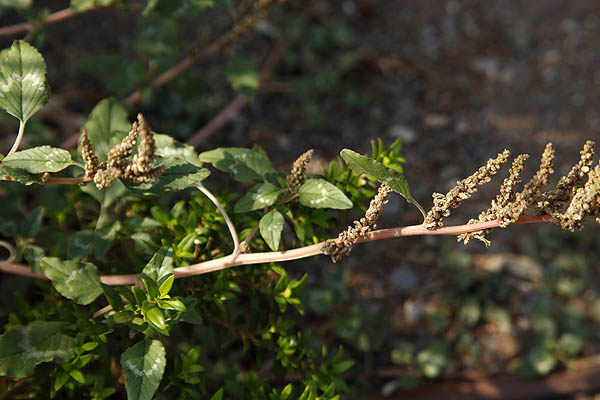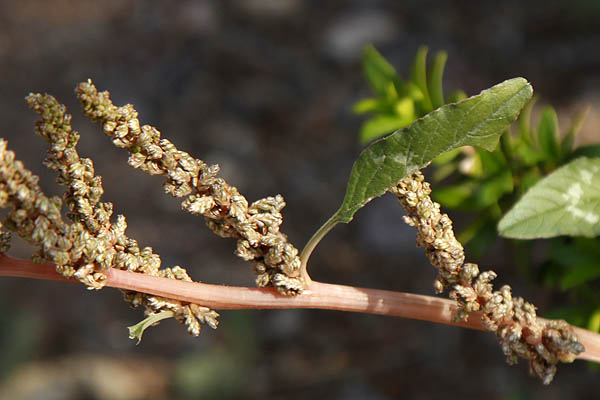Pig Weed, Slender Amaranth, Green Amaranth,
Hebrew: ירבוז עדין, Arabic: عرف الديك
| Scientific name: | Amaranthus viridis L. | |
| Synonym name: | Amaranthus gracilis Desf. | |
| Common name: | Pig Weed, Slender Amaranth, Green Amaranth | |
| Hebrew name: | ירבוז עדין | |
| Arabic name: | عرف الديك | |
| Family: | Amaranthaceae, ירבוזיים |

|
| Life form: | Annual herb | |
| Stems: | Green, often reddish; slender, cylindrical, smooth and striate | |
| Leaves: | Alternate, long-petiolated | |
| Flowers: | Monoecious, green, forming a glomerule or grouped in a spike; 3 linear or lanceolated sepals, 3 stamens. The pistillate flowers are at the base of the spike and are more numerous than staminate ones. The male flowers at the upper part of the spike have 5 stamens | |
| Fruits / pods: | Ovoid capsule, indehiscent, 1.2mm long and 1mm large, with one seed. The upper side of the fruit has a short stigma divided into three-pieces | |
| Flowering Period: | April, May, June, July, August, September, October, November | |
| Habitat: | Cultivated areas (weeds) | |
| Distribution: | Mediterranean Woodlands and Shrublands, Semi-steppe shrublands, Shrub-steppes, Deserts and extreme deserts, Montane vegetation of Mt. Hermon | |
| Chorotype: | Plurireginalbor-trop | |
| Summer shedding: | Ephemeral |

Derivation of the botanical name: Amaranthus Greek amarantos αμαραντοϛ, "unfading," a never fading flower, referring to the long-lasting flowers. viridis, green. The Hebrew word ירבוז, Yarbuz , probably from Persian. In Aramaic it is called 'ירבוזא', 'Yarbuza'.

|